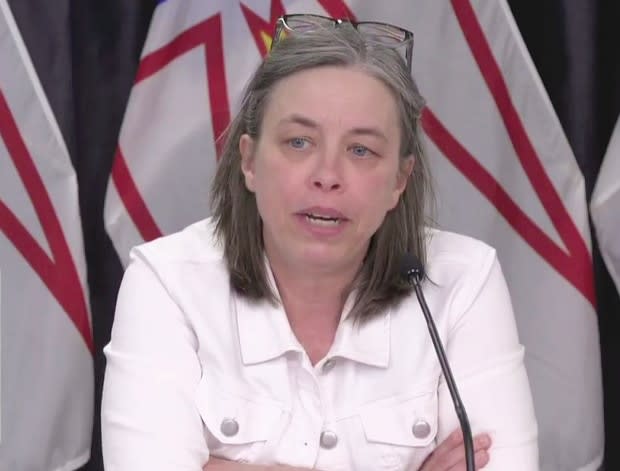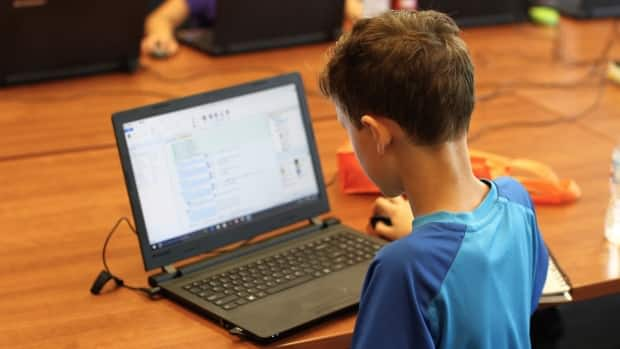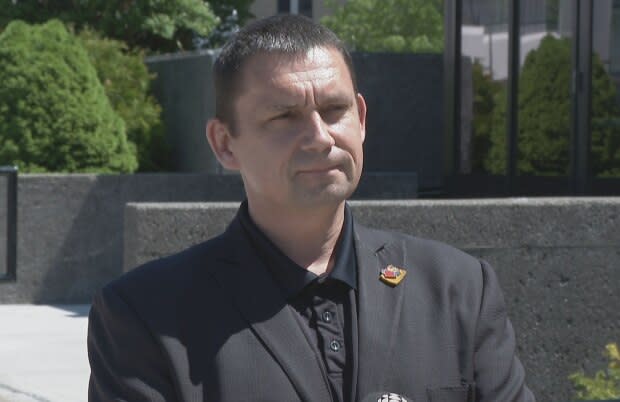N.L. aims to put kids back in school in September, but also preps 2 backup plans
Newfoundland and Labrador students are set to return to school in September, but whether or not they be in class — or stay there — will depend on COVID-19 spread in their region.
The province unveiled its plan to return students to classrooms on Monday afternoon in Springdale. It features three scenarios based on the risk of COVID-19 throughout the school year.
The first scenario involves schools opening and instruction resuming almost as normal. The second features schools being partially opened, while the third involves full time at-home learning.
Dr. Janice Fitzgerald, the province's chief medical officer of health, said the scenario chosen in September will be based on where the province stands with the disease at the time.
"If the epidemiology doesn't support having children back in school, obviously that is something we will consider at the time," Fitzgerald said during a technical briefing with reporters on Monday morning.
The first scenario would see students return to normal learning in classrooms, but with public health measures in place, such as physical distancing and sanitizing of surfaces. Classes could be "cohorted," meaning the same students would stay together throughout the day as much as possible to limit the number of interactions between students.

The second scenario could see school populations split up on alternating schedules, meaning some kids would go to school while others stayed home and then vice versa.
The third scenario would mean all in-school classes are cancelled. Teachers may be required to be in school to support students with learning or behavioural disabilities who need more more support. The rest of the students would be given at-home learning materials.
Education Minister Brian Warr said the decision on which scenario to enact will be on the school districts, in consultation with public health officials in their region.
Declaration forms
As part of the return-to-school plan, parents and guardians of students will be responsible for filling out a COVID-19 assessment sheet each morning.
The form has a rundown of symptoms with yes or no boxes next to each one. It also asks students if anyone in their household has been outside of Canada in the last 14 days, or if they've had "close, unprotected contact" with a person who has symptoms, or a person who has been tested.
The provincial government does not anticipate school hours will have to be adjusted to include time for things like submitting these assessment forms.
There also isn't a concrete plan on whether they will be paper sheets submitted to a staff members, if it will be an online form, or if it will be something parents and guardians are expected to do in good faith at home.
Hopes to avoid shutdown
The province also announced a $20-million expenditure on laptops and Chromebooks for staff and all students in Grade 7-12 in the event that the second or third scenarios are enacted and take-home technology is needed.
The changes between scenarios won't be province-wide, as it was when schools closed on March 16 for the year. Instead, it will be based on COVID-19 statistics in each region.
"A localized model is best as it allows for consistency, stability and equity regardless of the region in which students live," reads the report released by government on Monday.
"Those areas with minimal cases and lower risk may continue with in-class instruction more fully than areas with more COVID-19. The intent is to avoid a provincial 'shutdown.'"

If the province holds steady with its transmission rates, Fitzgerald said schools will return in the first scenario.
There is nothing in the plan for students or teachers who do not feel comfortable returning to classrooms. It also states that while a safe physical distancing recommendation of two metres is advised, but "strict physical distancing should not be over-emphasized to children in the school setting as it is not practical and could cause psychological harm."
Masks are not required but allowed if a teacher or student chooses to wear one.
The plan also includes different scenarios for public exams, busing and children with exceptionalities.
Under the first two return-to-school scenarios, public exams could continue as normal. Under the third scenario, public exams would be re-considered.
As for busing, siblings will be encouraged to sit together and all students will have to adhere to seating plans and sign log books to help with contact tracing.
The plan applies to all schools in the province, except those on First Nations, which are federally regulated. The school boards for First Nation schools have been provided the guidelines for educational purposes, but the province cannot mandate them to follow suit.
Opposition: plan lacks details
Progressive Conservative education critic Craig Pardy slammed the plan after the news conference.
"I think the parents were looking for details … and I don't think this really did the job," he told reporters Monday afternoon.
"I would think if you were going back to a school system where they had it capped at 10, in a pod, social distancing that would be six feet away … one teacher, that would give people a lot more confidence than what we currently have," he said.
Pardy said the plan, and the $20 million announced for Chromebooks, is "heavy on technology," but short on really digging into physical spacing and logistical or operational issues, including more money for cleaning services.
"I spent the majority of my career in education as a principal and I know how this announcement would make me feel if I was still in that role — the provincial government simply doesn't understand the needs of both our education system and of our children," he said in a media release.
NDP education critic Jim Dinn, a former president of the Newfoundland and Labrador Teachers' Association (NLTA), also said the plan lacked concrete details.
He also said it puts too much of a burden on the school districts to shift through the three scenarios.
"This so-called plan downloads significant responsibility on the school districts," Dinn said.

The NLTA voiced concerns about class sizes. Those are not set to change under the new plan, but larger classes could end up using bigger spaces like gymnasiums or auditoriums for instruction.
President Dean Ingram is calling on government to appoint an independent review of the current teacher allocation model, which he believes should include more resources and lower class sizes.
"Without an infusion of resources, it will be very challenging to have a safe and orderly environment for our students," Ingram said. "Any policy that is not adequately supported will be a policy that will fail."
Ingram said the NLTA has fielded 31,000 emails from its members with questions and concerns about going back to school in September.
There is nothing in the plan to address teachers who do not feel safe returning to the classroom.
Read more from CBC Newfoundland and Labrador

